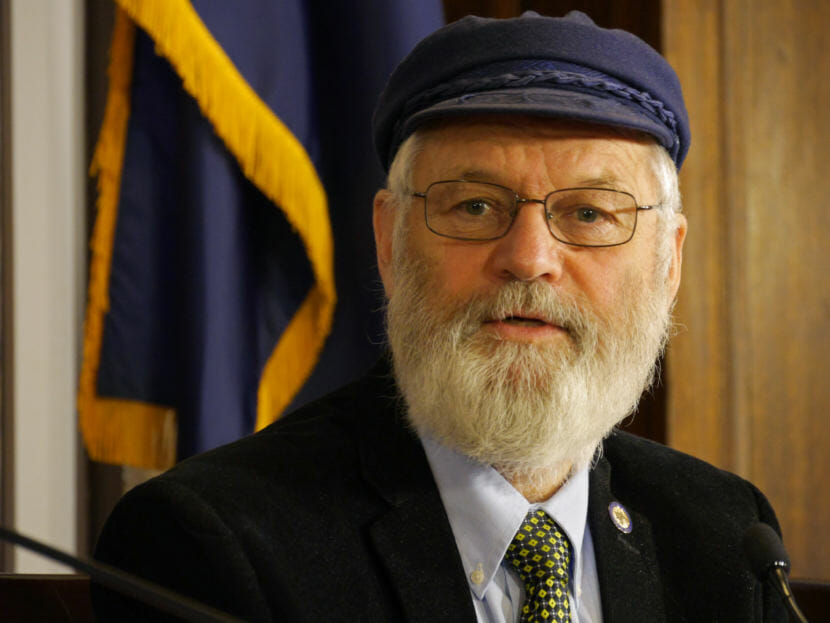
The lawmakers crafting a compromise budget for the state have proposed a $5.4 billion spending plan.
The operating budget draws from Alaska Permanent Fund earnings for the first time in state history. The state would draw $1.7 billion for state operations and $1 billion for permanent fund dividends.
Homer Republican Rep. Paul Seaton said the proposal strikes a balance between the House and Senate budgets.
“I think people have realized that they don’t want public safety cut any more, they don’t want education cut, they don’t really want the university cut,” Seaton said.
The operating budget conference committee agreed Thursday to spend $433 million more than the current fiscal year for the portion of the budget that the Legislature focuses on.
Most of the increase would go to dividends. PFDs would rise from $1,100 last year to $1,600 this year.
The budget also includes $107 million more in payments for retired public employees and $72 million more for the Department of Health and Social Services, due to an increase in Medicaid enrollment.
The committee struck a compromise on funding for the University of Alaska. The budget would increase the university budget by $10 million, which is more than the Senate proposed but less than the House offered.
It also includes a $30 million reduction in Medicaid funding from what Gov. Bill Walker’s administration requested. State officials project that they would be able to achieve $20 million in savings by shifting bills to the Indian Health Service.
Both chambers could vote on the budget Friday evening or Saturday.
The size of the capital budget is still being worked out. Its size will determine how much the state could draw from a different savings account, the Constitutional Budget Reserve. That’s the piggy bank the state has used to cover budget gaps in the past. But it’s starting to run low.
Any draw from the CBR would require support from three quarters of the lawmakers in both chambers. Seaton noted that if the House minority doesn’t support the draw, the budget would dip more deeply into the permanent fund earnings.
“We have to pass a balanced budget, and so there’s a backstop,” he said. “So, hopefully, we can all work together and both sides get a three-quarter draw to take that … about $700 million out of the Constitutional Budget Reserve, instead of having to take an extra draw out of the earnings reserve account.”
The House Finance Committee was discussing the capital budget late Friday afternoon.
